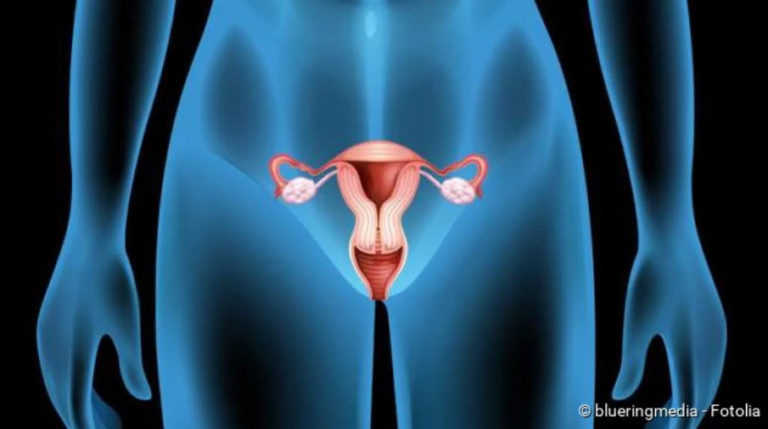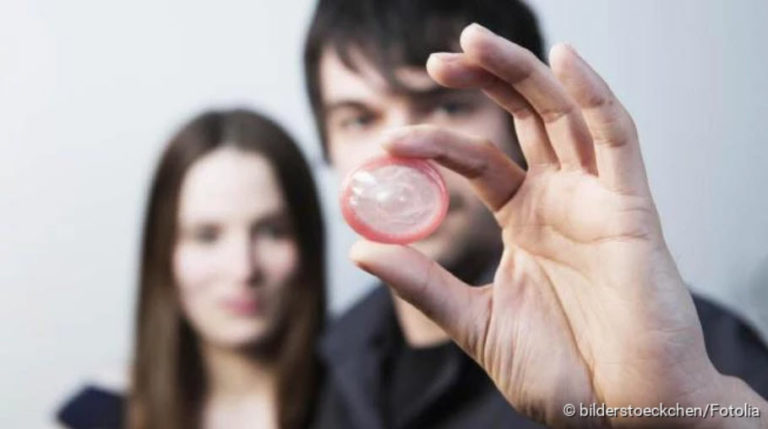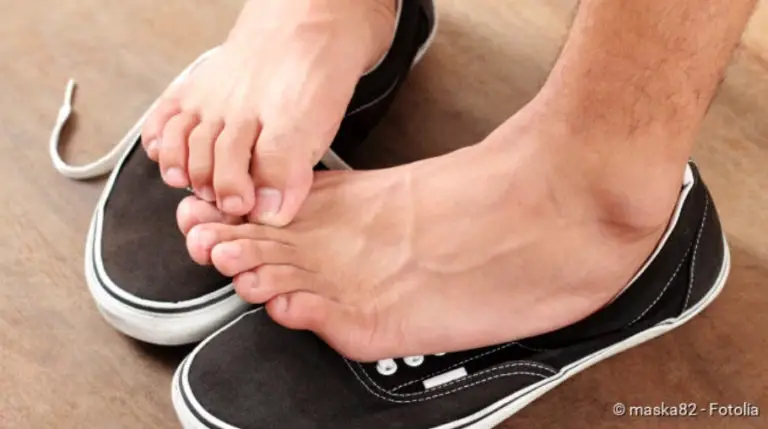Lyme disease: Trigger, course, prognosis
Lyme disease: Trigger, course, prognosis
Lyme disease is the umbrella term for a group of bacterial infectious diseases. Triggers are the Borrelia bacteria. Mainly relapsing fever and Lyme borreliosis belong to this group. However, the term borreliosis is often equated with Lyme borreliosis: it is the only native disease in Europe caused by borrelia. Here you will learn everything important about the path of infection, symptoms and treatment of Lyme disease.
Brief overview
- What is Lyme disease? Bacterial infection transmitted by tick bite (in 1-6 % of all tick bites in Germany), mostly in summer.
- Incubation period: One to several weeks elapse between the sting and the onset of the first symptoms.
- Distribution: Everywhere in forested and plant-covered Europe and North America
- Symptoms: At first flat reddening of the skin (“wandering redness”), flu-like symptoms with headache, aching limbs, fever. Possible late effects (late Lyme disease) are paraesthesia, paralysis, nerve pain (neuroborreliosis), joint inflammation.
- Diagnostics: Proof of blood and/or cerebral fluid analysis (cerebrospinal fluid analysis)
- Treatment: antibiotics (doxycycline), in pregnant/nursing women amoxicillin or cefuroxime; in late stages also ceftriaxone or cefotaxime
- Prevention: Skin inspection after all outdoor activities, early and professional removal of the tick
Borreliosis: Description
The group of Lyme disease diseases is caused by mobile, helical bacteria: the Borrelia bacteria. They infest humans and other mammals. For infection, however, they need blood-sucking insects as vectors. This is because the bacteria can only get into the skin of other organisms through the bites of these parasites:
In the vast majority of cases, Lyme disease is transmitted in this country by a tick bite, namely by the common wood tick (Ixodes ricinus). The infection rarely occurs via other bloodsuckers such as horseflies, mosquitoes or fleas. Direct transmission from person to person is not possible.
In Europe and North America, Lyme borreliosis occurs almost exclusively. Louse or tick relapse fever occurs mainly in the tropics or subtropics.
Lyme borreliosis
Lyme borreliosis or Lyme disease is the most common tick-borne disease in Europe. It is triggered by certain bacteria (Borrelia burgdorferi).
About five to 35 percent of ticks are infected with Lyme disease pathogens. However, only about one to six percent of tick bites are infected. In addition, only a small proportion of infected people actually contract Lyme disease.
If this happens, however, quick action is advisable: if the disease is detected and treated early, there is a good chance of recovery. However, if this is not the case, Lyme disease can cause late effects.
Lyme disease can heal spontaneously and by itself at any stage, especially in the early stages.
Lyme borreliosis: Occurrence
There are no typical borreliosis areas as known from TBE (early summer meningo-encephalitis) for example. Lyme disease occurs in all wooded and plant-covered areas in Europe and North America.
Since only ticks can cause Lyme disease in humans, there is a seasonal increase in the incidence of the disease. In this country one can get infected with Lyme disease from March to October (in warm weather also earlier or later in the year). Most infections occur in the summer months.
Lyme borreliosis: incubation period
Days to weeks pass between the tick bite and the appearance of the typical reddening of the skin and possible general symptoms such as fever (early stage of Lyme disease). The “incubation period” is what doctors call the time between infection and the onset of the disease. Because it is relatively long in Lyme disease, many patients cannot remember the tick bite. Often this was not even noticed.
Lyme disease: symptoms
The clinical picture of Lyme disease can be very diverse. Many people with Lyme disease initially show no symptoms at all. Others develop a reddening of the skin at the tick bite site, which slowly increases. Doctors refer to this as “wanderlust“. This can be accompanied by flu-like symptoms such as headaches, aching limbs and fever.
As the disease progresses, Borrelia bacteria can spread through the blood in the body and attack various organs. Corresponding symptoms only appear weeks to months after the tick bite:
The infection often spreads to the nervous system. Then an acute neuroborreliosis develops (see below). More rarely, Borrelia bacteria attack other body organs such as the heart muscle.
As late effects of Lyme disease, various complaints can occur months to years after the infection. These include chronic inflammation of the joints (Lyme arthritis) or the skin (acrodermatitis chronicica atrophicans Herxheimer). A chronic Lyme disease of the central nervous system (chronic neuroborreliosis) is also possible.
You can read more about the typical signs of Lyme disease and possible later consequences in the article Lyme disease – symptoms.
First of all: don’t panic! Studies show that Borrelia bacteria only migrate from the tick’s midgut into the host after about ten hours. Nevertheless, remove the tick as soon as possible and preferably with a tick card or tongs without squeezing the body. The second step is then to observe the puncture site.
A reddening of the puncture site, which occurs shortly after the tick has been removed and disappears again, is harmless. Skin reactions that only become apparent a few days later are typical for a Borrelia infection. Very often this is a ring-shaped reddening that spreads further and further – the so-called wandering reddening.
If you notice a skin change of any kind within six weeks after a tick bite – it doesn’t always have to be the typical ring! Or if you feel flu-like ill without having cold symptoms like a cold or cough. Then a doctor should clarify a possible infection with Borrelia.
Neuroborreliosis
A neuroborreliosis develops when the Borrelia bacteria attack the nervous system. Often the nerve roots of the spinal cord become inflamed (radiculitis), which causes excruciating, burning nerve pain. They are especially noticeable at night.
In addition, neuroborreliosis can be accompanied by flaccid paralysis (for example in the face) and neurological deficits (sensory disturbances). Children in particular often also suffer from meningitis.
Neuroborreliosis is usually curable. In severe cases, however, damage may remain.
You can read everything important about symptoms, diagnosis and therapy of neuroborreliosis in the article Neuroborreliosis.
Lyme disease: causes and risk factors
The pathogen causing Lyme disease is the bacterium Borrelia burgdorferi. It is transmitted from ticks to humans. A direct infection from person to person is not possible. That is why no person with Lyme disease is contagious!
The older a tick is, the higher the risk that it carries the borreliosis pathogens. Because the tick must first infect itself with the bacteria: it infects small rodents and other forest dwellers who carry the Borrelia bacteria inside themselves.
The bacteria do not make the tick itself sick, but survive in its stomach. This can be dangerous for people who have been chosen by the tick as its next “victim”: Ticks live especially on grasses, leaves and in bushes. There they wait for a passing person (or animal) to fall on to suck blood. The tick migrates to warm, moist and dark parts of the body. For example, the armpits and the pubic region are particularly popular. However, ticks can also bite any other part of the body.
Now, while a tick sucks blood from a human, it can transmit the Borrelia bacteria. The Lyme disease transmission only takes place towards the end of the blood meal: When the tick is full, it chokes some stomach contents into the wound of the victim, and with it the bacterium Borrelia burgdorferi.
This means that the risk of infection increases with the duration of the sucking act. If a tick sucks on a human for less than 24 hours, the risk of borreliosis transmission is low. However, it increases if the suction period is longer than 24 hours.
If you try to poison or suffocate a tick sucking on the skin with oil or other substances, you increase the risk of infection! This is because there is a high risk that the tick will churn out stomach contents in its fight for survival.
Borrelia: A difficult opponent for the immune system
Many people wonder why our immune system cannot simply remove the bacterium from the body after infection. This may be the case with some people. They show no symptoms, although their immune system was confronted with the pathogen at a certain point in time.
However, the borreliosis bacterium has some clever mechanisms to escape the human immune system. For example, it can change its surface in such a way that the body’s defence system cannot cope with the recognition of the pathogen.
In addition, the bacteria literally hide from the immune system: On the one hand, they colonize areas of the body that are poorly controlled by the immune system, such as the brain or joints. On the other hand, the bacteria invade human cells in order to escape detection and control.
Lyme disease: examinations and diagnosis
Tick bite – yes or no? The answer to this question is important for the doctor to be able to clarify the suspicion of Lyme disease. Since symptoms of the disease often appear weeks or months after the infection, many patients do not remember the tick bite. But then you can at least tell the doctor if there was a chance to do so: If you go for a walk in the woods or meadows or if you are weeding the garden, you can easily catch a tick.
Besides the possibility of a tick bite, the doctor is also interested in the exact symptoms of the patient: In early stages of the disease, the “wandering blush” is particularly meaningful. The doctor should also be informed about general symptoms such as headache and aching limbs. In the late stages, patients often report chronic joint pain or neurological complaints.
The suspicion “Lyme disease” can finally be substantiated by laboratory tests. For example, the physician can search for antibodies against Borrelia bacteria in a blood or nerve water sample (in the case of neuroborreliosis). However, the interpretation of such laboratory results is not always easy.
You can read more about the diagnosis of Lyme disease in the article Borreliose – Test.
Lyme disease: treatment
Borrelia can be treated with antibiotics like other bacteria. The type, dose and duration of application of the drugs depend mainly on the stage of the Lyme disease and the age of the patient. For example, adults in early stages of the disease usually receive tablets containing the active ingredient doxycycline. However, this antibiotic must not be used in children and pregnant women. Instead, the doctor prescribes amoxicillin or cefuroxime here.
In later stages of the disease (chronic neuroborreliosis etc.) patients are often treated with antibiotics such as ceftriaxone or cefotaxime. The drugs can be administered as infusions.
The success of antibiotic therapy depends on the start of treatment: In the early stages of Lyme disease, the treatment is usually more effective than in later stages.
You can read more about the treatment of Lyme disease in the article Lyme disease – therapy.
Lyme disease: course of disease and prognosis
A fast start of therapy is very important in case of Lyme disease. The course and prognosis of the disease are significantly influenced by whether the bacteria have had time to spread and multiply in the body. It also depends on this whether consequential damages remain after the borreliosis. The best chances for a complete recovery without consequences are if Lyme disease is detected and treated at an early stage (“wandering blush”).
However, many patients lack the typical reddening of the skin, which is why Lyme disease is often detected and treated late. The bacteria then had enough time to spread through the bloodstream in the body and attack organs. For example, Lyme disease in children leads more often than in adults to an infestation of the brain with meningitis. The treatment of Lyme disease in such advanced stages of the disease is often difficult.
Once a borreliosis has been overcome, which has healed spontaneously or under therapy, there is no immunity. This means that one can later become newly infected with Lyme disease and fall ill with it.
Post-Lyme Borreliosis Syndrome
The post-borreliosis syndrome is particularly popular in health magazines or the media. It is often called “chronic fatigue syndrome”. However, there is no clear definition that describes this clinical picture. The media often report about undefined pain, fatigue, lack of drive or muscle pain. In fact, Borrelia could cause these complaints, but this is also true for a variety of other diseases.
A chronic Borrelia infection usually manifests itself in skin changes (acrodermatitis chronicica atrophicans Herxheimer), joint inflammation (Lyme arthritis) or nerve changes (chronic neuroborreliosis). They are more likely to be recognized and attributed to Borrelia bacteria than unspecific complaints such as persistent fatigue or muscle pain. Therefore, many experts doubt that the alleged “post-Borreliosis-Syndrome” is actually related to a Borrelia infection. According to the medical guidelines, no Lyme disease blood test should be carried out in such a case, as it only detects Lyme disease very imprecisely.
Instead, one should try to alleviate the patient’s symptoms and look for another cause of the symptoms. In some cases there is even a hidden depression or a viral disease as the cause of chronic fatigue or lack of concentration.
Lyme disease & pregnancy
If Lyme disease occurs during pregnancy, early treatment is particularly important. The bacterium Borrelia burgdorferi can colonize the placenta and possibly disturb the child’s development. The exact effects have not been very well studied, but organ damage and stillbirths have been linked to Lyme disease.
Even if the connection is not proven beyond doubt, Lyme disease in pregnancy should be treated with antibiotics. The doctor chooses active ingredients that do not harm the unborn child.
Lyme disease: Prevention
The only starting point for protection against borreliosis is offered by ticks: Prevent tick bites or remove an already sucking tick as soon as possible. The following tips apply:
If you are out and about in woods and meadows or doing gardening, you should wear light (white) clothing if possible. Ticks are easier to spot on them than dark textiles. The arms and legs should also be covered by clothing so that the little bloodsuckers do not easily make skin contact.
You can also apply tick or insect repellents. But remember that these do not provide 100% protection against a tick bite and are only effective for a few hours.
In any case, you should thoroughly search your whole body for ticks after a stay in the wild. Also check your pets for possible ticks: The parasites could transfer from your cat or dog to you.
If you find a sucking tick on your skin, you should remove it immediately and professionally: grasp the tick with fine tweezers or tick tweezers directly over the skin and pull it out slowly and without twisting. Press as little as possible to avoid pressing the stomach contents of the animal into the wound. Also check that you have not accidentally ripped off the body while the head of the parasite is still in the wound.
Then you should disinfect the stab wound. Although this does not protect against Lyme disease, it prevents wound infection (e.g. with tetanus bacteria).
Taking antibiotics as a precaution after a tick bite (without diagnosis of a Lyme disease infection) is not recommended.
There is no preventive vaccine against borreliosis.






